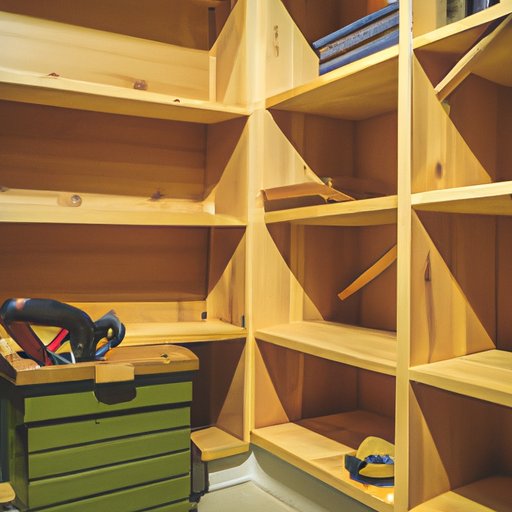
Introduction
Building a bookshelf can be a rewarding project that not only adds functionality to your home but also allows you to showcase your creative side. In this article, we will provide you with a step-by-step guide on how to build a bookshelf from scratch, including the necessary materials, tools, and design ideas to personalize your project.
A Step-by-Step Guide
The first step in building a bookshelf is to measure and plan. Decide the dimensions of your bookshelf and select the appropriate wood and other materials. Depending on your needs, you may want to build an open-style or closed style bookshelf.
Once you have your plan in place, it is time to gather all the materials you need. You will need wood, screws, wood glue, saw, drill, tape measure, sandpaper, and paint or stain. Afterward, cut the wood to the required sizes and assemble the pieces as per your design.
Next, fix the shelves in position, adjust them to level, and edge band the front of the shelves. Sand the bookshelf to smoothen it out, paint or stain it, and use your bookshelf after it dries out.
Materials Guide
A variety of wood can be used for making a bookshelf, but the most popular kinds are pine, oak, and plywoods. Pine is suitable for those on a budget and those looking for a softwood option. Oak survives well over time and is excellent if you are looking for hardwood options. Plywood is perfect for those who wish to compromise between cost and quality with its veneer coating delivering an attractive look.
When picking screws, you should choose screws that are appropriate for the wood you are using. Use screws that are long enough to go through two boards and be safe. You may also require a drill bit to drill holes in your wood. Always ensure that each item on your shopping list is a match in terms of size and quality.
Creative Design Tips
There are many ways to personalize your bookshelf, making it more than just a plain piece of furniture. You can choose to add different dimensions or create a unique shape. Painting and staining your bookshelf provides an excellent opportunity for creativity, giving you a chance to match your bookshelf to your home decor.
Experiment with different finishes and techniques, such as sanding to create a distressed or shabby chic look. You might also consider adding decorative touch-ups, such as stenciling or adding textured wallpaper to the back of the shelves.
Organizing Your Bookshelf
Organizing your bookshelf can be both a practical and aesthetic exercise. You may choose to prioritize organizing your books by genre, author, alphabetical order, or color. If you like, you can use a combination of these approaches. Also, consider adding bookends, decorative items, and plants to make your shelf feel more complete and add to the overall aesthetic.
It is essential to remember always to leave some extra space for future additions to your book collection. You can expand the size of your bookshelf or try unconventional placement tactics, such as stacking your books horizontally so that the spines face upwards.
Conclusion
Building a bookshelf can be an enjoyable and rewarding experience, providing an opportunity for DIYers to showcase their creativity while also producing a functional piece of furniture. With our step-by-step guide, you can create a bookshelf to meet your requirements and suit your decor. Experiment with different designs, finishes, and organization ideas, and be sure to leave some extra space for future additions to your collection.





